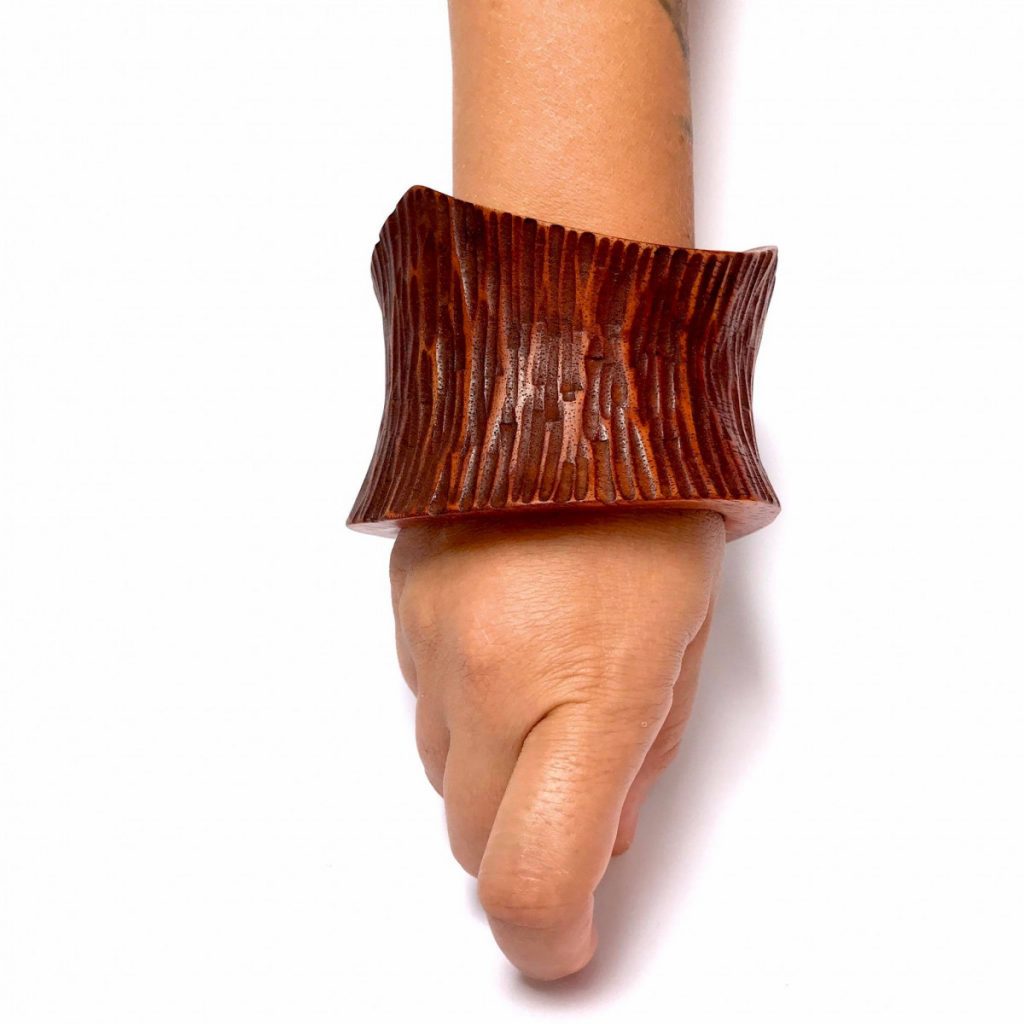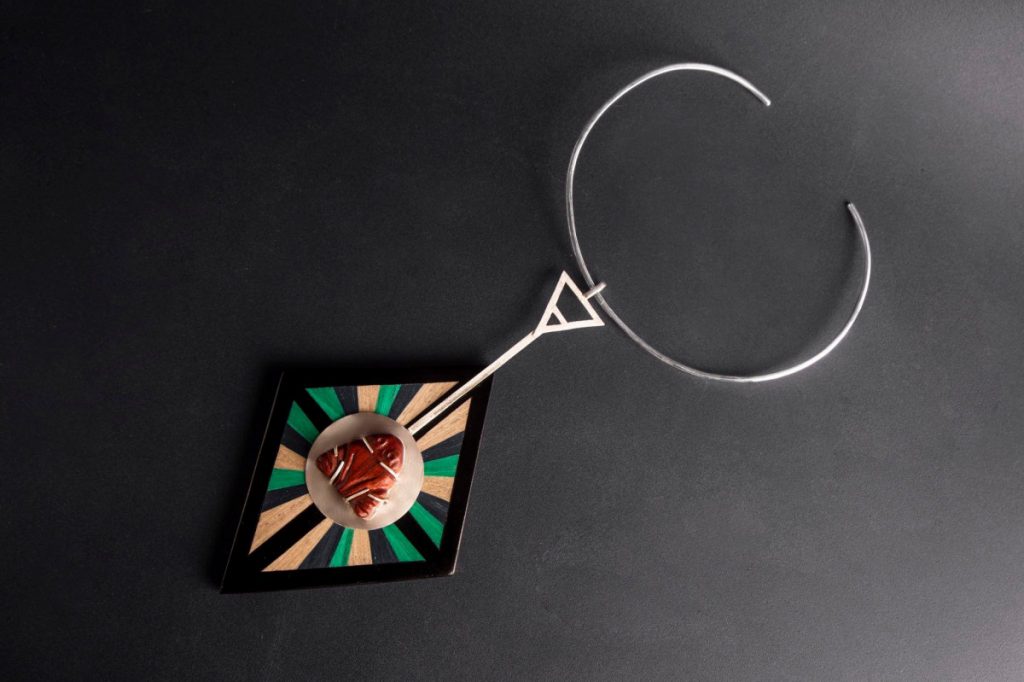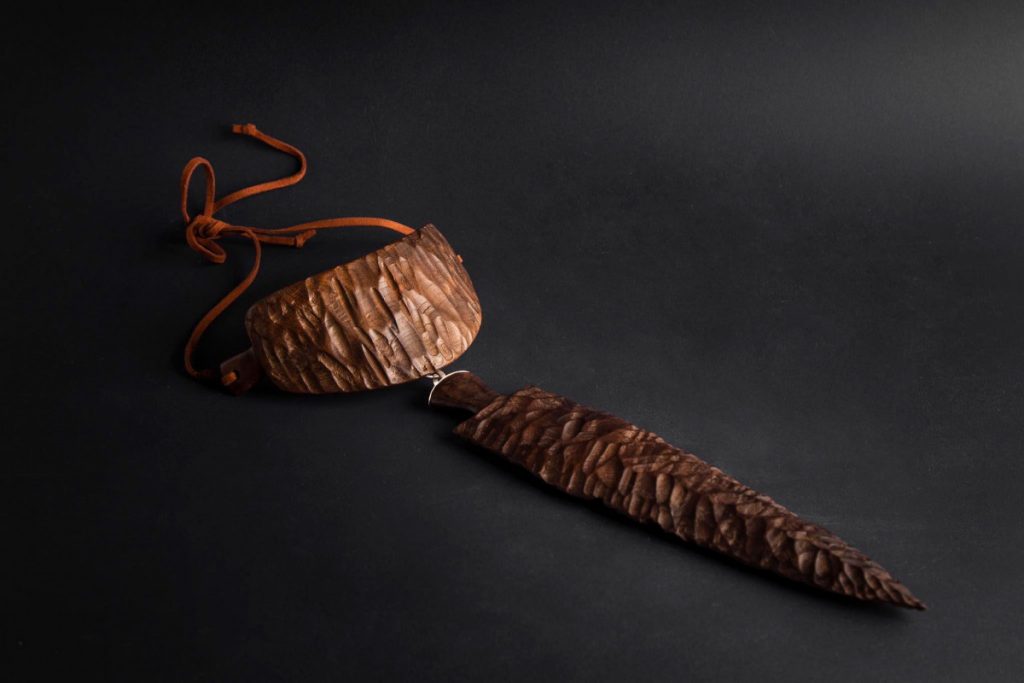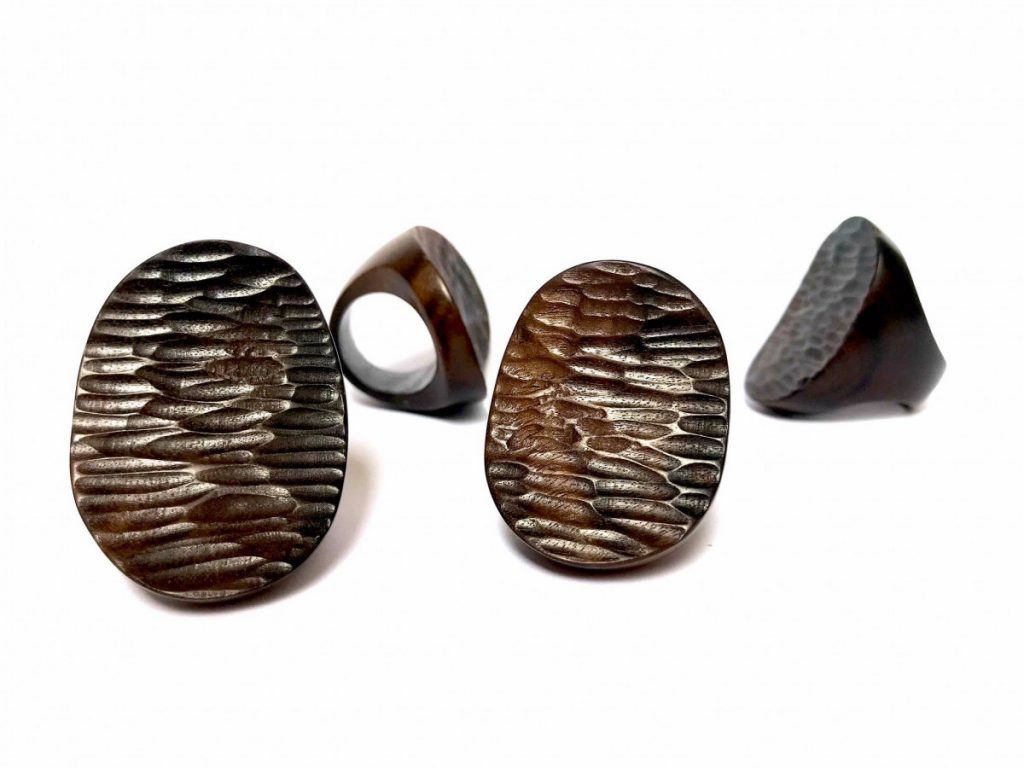We may receive a commission when you use our affiliate links. However, this does not impact our recommendations.

Bracelet produced with the excavated wood technique.
Woodworker and designer Cristiane Martins has a thing for puzzles, and her journey to fine marquetry is a culmination of the pieces she has picked up along her path.
Born in Belém do Pará, in the Brazilian Amazônia, Martins has created her own unique contribution to the world of woodworking in just a few short years. She combines her professional career in archeology and anthropology with her love of the craft and the cultural essence of Amazônia to produce some remarkable results.
“I am a master in Archeology and Anthropology and passionate about the origins of indigenous peoples and their ancestry. I learned to tell stories in archeological excavations, and today in marquetry I realize that I continue to assemble puzzles, now with the skins of the trees (the wood veneers),” she explains.
Cristiane has always liked the manual nature of craft production, and after testing out her ideas with different materials and techniques, she discovered that wood enchanted her. Martins began woodworking in 2017 by exploring the many different techniques within the craft. Ever the researcher, Cristiane fell in love with marquetry and the history of the technique’s origins in Mesopotamia. She claims that connecting herself to the ancestry of marquetry is what spoke to her creatively as an artist and archeologist.

Yaci-Uaruá amulet necklace or lake mirror of the moon. A muiraquitã (batrachian) seated on the reflection of the 950 silver moon projected on a marquetry lake. The muiraquitã is a pre-colonial indigenous amulet found in the archaeological sites of the Amazônia. Associated with spells for fertility and prosperity. (Photo: Estúdio Tereza e Aryanne).
“I saw in this raw material a sensory experience of recognizing texture, smells, and also a lot of female ancestry. Here in Amazônia, people are very connected with trees, bark, leaves, seeds, and fruits, and we use them as medicine, in food, cosmetics, perfumery, in architecture, design, crafts, and jewelry. There is a lot of abundance in our region. We learned different ways of using it with indigenous groups, and with the national market,” she says.
She has since developed her own special technique that brings character and a powerful provenance to her work. She takes wood excavated in her archeological work and then creates unique, one-of-a-kind jewelry with the artifacts and 950 silver. She has grown to start her own jewelry business, aptly named Amazônia Ancestral.

Ear cuff marquetry wing and 950 silver. This is a personalized production where each woman selects her own colors for the adornment.
“Today, marquetry and archeology are merged into my creations full of meaning, historical wealth, and connection with nature. I don’t know if I’m an archeologist marcheteira (marquetry) or an marcheteira archeologist,” she says, “For me, working with wood is a way of maintaining the traditional ways of managing the nature of my ancestors. Here we also have several techniques for the use of wood and its derivatives. I chose marquetry for the meticulous work of assembling the puzzles. Now in the pandemic, I started digging the wood and rescuing the popular memory about women in our region. For me this is female empowerment, as I always associate historical content in my pieces.”
When asked how she develops the ideas for her sculptured, ethereal pieces, Cristiane shares that there is no shortage of inspiration naturally occurring around her. “To be an artist in the Amazon is to be in constant contact with stories of people’s popular imagination and their relationship with nature. Our forest is a great sensory laboratory. Here we have a sensitive view of the sacred aspects of the land, an inheritance of indigenous peoples. In the cities there are many legends and stories about rivers, enchanted characters, plants and animals. It is a language that inspires contemporary artists to create works with Amazonian DNA. In my work I try to keep this inspiration coming directly from nature. Its elements are present during my production process, which is all manual: my packaging, for example, is full of elements from nature to transform the experience of delivering the pieces into something sensorial. It takes the smells and textures of the forest to whoever receives it in different parts of Brazil and the world. I present my work as art of the forest so that people and the market can overcome prejudice against artists from the Amazon, Brazil and Latin America.”
Martins’ cultural identity is embodied within her work, her archeological influences intertwined with intentional creative choices to share stories that are the heartbeat of Amazônia. While living in the state of Acre, Brazil, she attended a women’s school taught by Glads Mourão. Martins and her fellow students studied shamanism- how to use the elements of mother nature to understand feminine cycles, intuition, and the recognition of each students’ “instinctive woman” within, creating a very intuitive creative process for Martins.

Amulet necklace “We are the daughters of those who were not wiped out in the forest”. Excavated wood and Silver 950. Inspired by the aspect of strength and defense of Icamiabas, warrior women from the Amazônia. (Photo: Estúdio Tereza e Aryanne)
“Archeology is also present in my jewels, like the trilogy of Icamiabas (indigenous warrior women who are very present in popular memory). In my work, I also refer to energy and the sacred feminine,” she explains.
Like many other woodworking cultures around the world, Martins shares that there is a predominance of men in the woodworking culture of Brazil. There are still few female artists in the craft of historically masculine tradition, with men being more present in studios, leadership of major brands, and companies.
For the future of women in woodworking in her country and beyond, Martins sees change and the importance of women having access to spaces to talk about their experiences in the craft. She also recognizes it helps to create a place for women in the market.
“The future is feminine. We women view our business with intuition and sensitivity. This, added to our knowledge and technical performance can make people value what we produce much more. I hope that more women occupy places in the woodworking, and that they produce pieces from their hearts with more affection and sensitivity,” she explains.

Rings produced with the excavated wood technique.
As far as her own work and skills, Martins pledges to keep it personal. “I like to keep in all my projects the personal way of observing nature and relating to the world. I hope to be able to sensitize other women and people to consume stories and respect for forests through objects. I argue that our productions must positively impact people. My task is to maintain this truth in everything I do, and to speak of the Amazon in a sacred and respectful way. A jewel is not merely decorative. A jewel causes a speech and a feeling of belonging and respect to the forest. This is my goal.”
To view more of Martins work, you can follow her on Instagram @amazoniaancestral.

In the midst of their “tree skins”, as the wood veneers call it. (Photo: Nay Menezes)
Here are some supplies and tools we find essential in our everyday work around the shop. We may receive a commission from sales referred by our links; however, we have carefully selected these products for their usefulness and quality.








